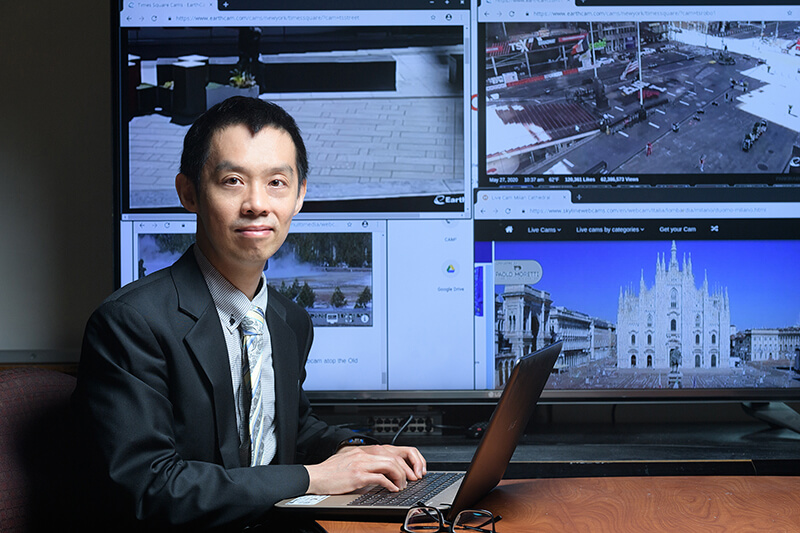Note to Journalists: A video by the researchers explaining this project is available on YouTube. A copy of the paper is available for download via the Arxiv preprint server. A photo of Yung-Hsiang Lu and public camera images of Times Square are available via Google Drive
Website organizes public camera footage to study social distancing
WEST LAFAYETTE, Ind. — Public camera footage of how people have responded so far to COVID-19 social distancing guidelines in spaces such as tourist spots and busy street corners could help inform new policies as the pandemic progresses.
But that footage is scattered all over the internet.
Purdue University engineers built a website that pools together live footage and images from approximately 30,000 network cameras in more than 100 countries, making data easier to analyze.
The site has documented footage since March that could help evaluate the effectiveness of lockdowns and restrictions. Video and images captured by the system do not identify individuals – just the number of people in a public space from a distance. The system also does not use facial recognition technology.
 Yung-Hsiang Lu and his students are using data from thousands of public network cameras worldwide to see how COVID-19 restrictions have affected crowd size and behavior over time. (Purdue University photo/John Underwood)
Yung-Hsiang Lu and his students are using data from thousands of public network cameras worldwide to see how COVID-19 restrictions have affected crowd size and behavior over time. (Purdue University photo/John Underwood) Researchers and policymakers can visit the site cam2project.net to access the footage. The resource is described further in a paper pending publication and supported by a grant from the National Science Foundation
"Researchers already have the tools they need to analyze human behavior from video and photos, but this behavior can vary significantly depending on the context or culture of a place. We need extensive data to get those detailed insights, and this site provides that data," said Yung-Hsiang Lu, a Purdue professor of Electrical and Computer Engineering
A video by Lu's lab explaining this resource is available on YouTube
Images and footage from network cameras, such as those overlooking city streets and squares, are publicly available on the internet. But because each website organizes and presents visual data differently, it would be challenging and tedious to sift through each network camera's feed.
 COVID-19 lockdowns have made public spaces look drastically different. A new tool is helping researchers discern trends that could inform policies going forward. Photo: Times Square on June 23, 2019 (left) and March 1, 2020. (
COVID-19 lockdowns have made public spaces look drastically different. A new tool is helping researchers discern trends that could inform policies going forward. Photo: Times Square on June 23, 2019 (left) and March 1, 2020. ( 





